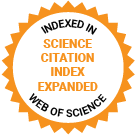Journal of Medical Internet Research
The leading peer-reviewed journal for digital medicine and health and health care in the internet age.
Editor-in-Chief:
Gunther Eysenbach, MD, MPH, FACMI, Founding Editor and Publisher; Adjunct Professor, School of Health Information Science, University of Victoria, Canada
Impact Factor 5.8 CiteScore 14.4
Recent Articles

The proliferation of internet-based health information has intensified cyberchondria, or anxiety resulting from excessive health-related searches. The relationship between cyberchondria and suicidal ideation remains underexplored, although there are indications that people with high levels of cyberchondria may also be suicidal. Understanding this relationship is critical, given rising digital health-seeking behaviors and the need to mitigate suicide risk. Emerging evidence suggests that psychological distress can mediate the relationship between cyberchondria and suicidal ideation. However, to the best of our knowledge, no research has directly examined these associations.

The last decade has witnessed major advances in the development of artificial intelligence (AI) technologies for use in health care. One of the most promising areas of research that has potential clinical utility is the use of AI in pathology to aid cancer diagnosis and management. While the value of using AI to improve the efficiency and accuracy of diagnosis cannot be underestimated, there are challenges in the development and implementation of such technologies. Notably, questions remain about public support for the use of AI to assist in pathological diagnosis and for the use of health care data, including data obtained from tissue samples, to train algorithms.

Delirium in intensive care unit (ICU) patients poses a significant challenge, affecting patient outcomes and health care efficiency. Developing an accurate, real-time prediction model for delirium represents an advancement in critical care, addressing needs for timely intervention and resource optimization in ICUs.

Men who have sex with men have a disproportionately high prevalence of HIV worldwide. In Brazil, men who have sex with men account for over 15% of HIV cases, substantially higher than the general population prevalence of 0.6%. Pre-exposure prophylaxis (PrEP) is a critical biomedical strategy for reducing HIV transmission, yet adherence remains challenging due to stigma, logistical barriers, and the need for regular clinical follow-ups. TelePrEP, a telehealth-based approach to PrEP follow-up, has emerged as a potential solution to improve accessibility and reduce stigma. However, the perspectives of users and health care providers on this intervention remain understudied in low- and middle-income countries, such as Brazil.

Symptom checker apps (SCAs) are layperson-facing tools that advise on whether and where to seek care, or possible diagnoses. Previous research has primarily focused on evaluating the accuracy, safety, and usability of their recommendations. However, studies examining SCAs’ impact on clinical care, including the patient-physician interaction and satisfaction with care, remain scarce.

As the percentage of the older population increases, it is accompanied by an increase in the prevalence of Parkinson disease (PD). People with PD experience a range of nonmotor symptoms, including pain, constipation, dysphagia, sleep disturbances, and fatigue. Improving self-care is necessary for people with PD because it is a chronic disease that requires lifelong management. In our previous study, we developed a mobile app (Yon PD app) to monitor nonmotor symptoms of PD. In this study, we investigated the long-term effects of the app in a larger group of people.

Panic disorder is an anxiety disorder marked by severe fear of panic attacks in the absence of causes. Agoraphobia is a related anxiety disorder, which involves fear and avoidance of specific situations in which escape or help may be difficult. Both can be debilitating and impair well-being. One treatment option may be internet-based cognitive behavioral therapy (iCBT), which allows large-scale application and may overcome treatment barriers for some individuals.

Large language model (LLM) artificial intelligence (AI) tools have the potential to streamline health care administration by enhancing efficiency in document drafting, resource allocation, and communication tasks. Despite this potential, the adoption of such tools among hospital administrators remains understudied, particularly at the individual level.

As the number of people diagnosed with cancer continues to increase, self-management has become crucial for patients recovering from cancer surgery or undergoing chemotherapy. Technology has emerged as a key tool in supporting self-management, particularly through interventions that promote physical activity, which is important for improving health outcomes and quality of life for patients with cancer. Despite the growing availability of digital tools that facilitate physical activity tracking, high-level evidence of their long-term effectiveness remains limited.

The COVID-19 pandemic required psychologists and other mental health professionals to use videoconferencing platforms. Previous research has highlighted therapists’ hesitation toward adopting the medium since they find it hard to establish control over videoconferencing psychotherapy (VCP). An earlier study provided a set of potential features that may help enhance psychologists’ control in their videoconference sessions, such as screen control functionality, emergency call functionality, eye contact functionality, zooming in and out functionality, and an interactive interface with other apps and software.
Preprints Open for Peer-Review
Open Peer Review Period:
-
Open Peer Review Period:
-
Open Peer Review Period:
-
Open Peer Review Period:
-
Open Peer Review Period:
-


















